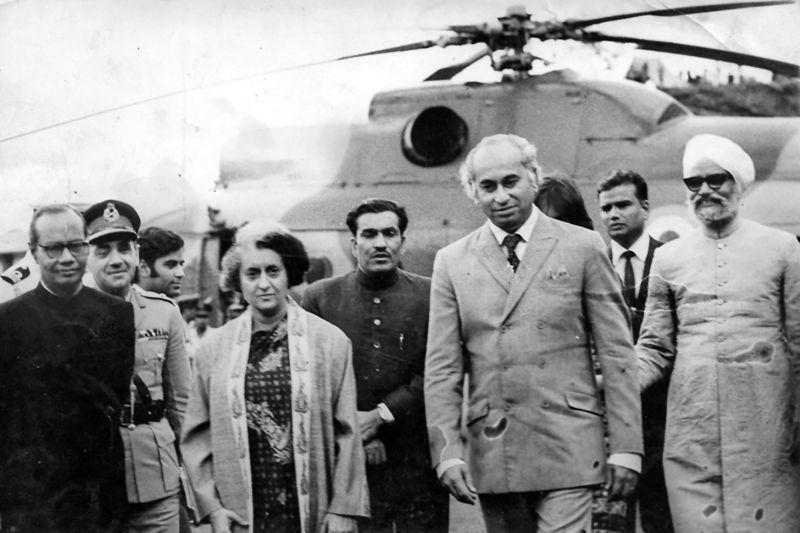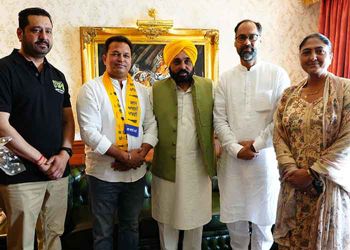
INJUSTICE: Former PM Indira Gandhi had condemned Bhutto’s hanging, saying that he was a victim of a conspiracy. - File photo
Vappala Balachandran
Former Special Secretary, Cabinet Secretariat
IN June 2011, the then President Asif Ali Zardari moved the Pakistan Supreme Court to review the death penalty given to late Prime Minister Zulfikar Ali Bhutto in February 1979 by a seven-member SC Bench (four-three verdict). On March 6, 2024, Chief Justice Qazi Faez Isa announced the unanimous decision of the nine-member Bench that it “didn’t find that the fair trial and due process requirements were met.”
Bhutto’s execution was considered as a ‘judicial murder’ by many legal experts due to several reasons, including his trial being the only one in Pakistan’s judicial history to be conducted by a ‘high’ court and not in a regular trial court. As a result, he was denied some rights of appeal. Zia’s military coup took place on July 5, 1977. Bhutto was initially detained for a month. After his release, he was greeted by massive crowds, which made Zia panicky, whereupon he was arrested on September 3 on a 1974 murder charge.
Mubhashir Hasan, Bhutto’s Finance Minister, narrates details of the judicial transgression in his book The Mirage of Power. The chargesheet in the murder case was presented on September 11, 1977, in the Sessions Court. The same day, the military government moved the Supreme Court to transfer the case to the Lahore High Court without giving a notice to Bhutto. Simultaneously, acting Chief Justice Maulvi Mushtaq Hussain of the Lahore High Court, a known Bhutto hater, was summoned from his foreign tour. Hasan quotes Hussain telling his journalist friend: “If I do not try the case, no other judge will hang Bhutto.” A part of the trial was conducted in camera. The death sentence was given on March 18, 1978. The Supreme Court heard the appeal, but gave the final verdict of ‘guilty’ on February 6, 1979.
Former US Attorney General Ramsey Clark, who represented Bhutto in the Supreme Court, revealed to The New York Times (February 14, 1979) that two of the nine SC judges were prevented from attending the court through questionable means. Had they been present, the verdict would have been different. He also said that the case had no eyewitness, direct evidence or physical evidence and the glaring defects in the lower court’s proceedings were not rectified. On March 24, 1979, the Supreme Court finally rejected the family’s appeal. Bhutto was hanged in the Central Jail, Rawalpindi, on April 4.
Hasan writes that Bhutto was kept in “appalling conditions” in the jail and treated inhumanly after the death sentence was passed. He was shifted to the Rawalpindi jail in “a transport fit enough to carry only garbage”. Before the hanging, appeals from several world leaders, including three pleas from then US President Jimmy Carter, were ignored by Zia, who privately ridiculed them of indulging in ‘trade union’ activity. On March 1, 1979, the US House of Representatives passed a resolution requesting Zia to spare Bhutto’s life.
The glaring exceptions were India’s leaders Morarji Desai and Atal Bihari Vajpayee, who said “this issue was Pakistan’s internal matter, in which India did not want to interfere.” However, Opposition leader Indira Gandhi issued a statement “condemning the hanging” and said Bhutto had become a victim of a conspiracy.
Bhutto’s last testament If I am Assassinated, written in his death cell “with the paper resting on my knees”, had cast aspersions on some foreign powers, mainly the US, over his downfall. The manuscript was smuggled out to Britain and distributed in Xerox copy form. This book was published by Vikas Publishing House (New Delhi) in April 1979, with an incisive introduction by legendary journalist Pran Chopra, who wrote it before the Supreme Court’s final verdict. Bhutto was hanged by the time the book appeared.
Chopra quotes India-born US academic Shirin Tahir-Kheli, then with Temple University (US) and later an American diplomat, who wrote in the Asian Survey (1978) that the outgoing US Ambassador in Islamabad had bluntly told Bhutto that “if he did not back down, he would no longer stay in power.” This was in respect of Bhutto’s quest for a nuclear bomb through clandestine means. Former US diplomat Dennis Kux disputes this version in his book The United States & Pakistan, 1947-2000: Disenchanted Allies (2001), based on US archives.
Kux said Bhutto’s disenchantment with the US started after his meeting with then President Lyndon Johnson on November 29, 1963, when the latter questioned him on his China policy and interference in Afghanistan’s affairs. Bhutto told Philip Talbot, Assistant Secretary of State, at the airport that Johnson was a “wild man in the White House from whom Pakistan could expect little.” Since 1976, the US-Pakistan ties had become acrimonious as Henry Kissinger, during Gerald Ford’s presidency, started trying to persuade Bhutto to abandon the clandestine nuclear enrichment programme and the parallel centrifuge reprocessing route through AQ Khan. “The intensity with which Kissinger pursued the nuclear question surprised his Pakistani hosts,” wrote Kux.
However, the US administration was concerned by the 1974 Indian nuclear tests, which echoed in the 1976 presidential election campaign to tighten export control of nuclear material, which finally came in the form of the Glenn-Symington Amendment to bar economic and military assistance to the non-signatories of the Nuclear Non-Proliferation Treaty. “The US managed to derail nuclear projects in Argentina, Brazil, South Korea and Taiwan, but not in Pakistan,” Kux said.
He added that Bhutto was adamant about pursuing the programme. On April 28, 1977, he dramatically revealed details of the ‘Moore-Schaffer conversation’ to the National Assembly to prove that the US was planning to oust him. That was when the late Howard Schaffer, then Political Counsellor, was heard discussing Pakistan’s internal situation with Robert Moore, then Consul General in Karachi. That also indicated that Pakistani intelligence agencies were monitoring US Embassy telephones.
Finally, it was Bhutto’s charisma that made Zia insist on executing him. Chopra says: “If Ayatollah Khomeini, exiled from his country for 15 years… can bring about the downfall of such a powerful and entrenched monarch as the Shah of Iran, what could Bhutto not do to the military regime of President Zia if he got the chance?”
Views are personal
Join Whatsapp Channel of The Tribune for latest updates.




























